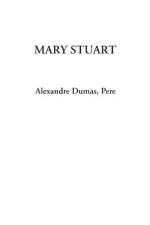The advice of the most judicious among those about the queen was to shut herself up in the strong castle of Dumbarton, which, being impregnable, would give all her adherents time to assemble together, distant and scattered as they were: accordingly, the guidance of the troops who were to conduct the queen to that town was entrusted to the Earl of Argyll, and the 11th of May she took the road with an army of nearly ten thousand men.
Murray was at Glasgow when he heard of the queen’s escape: the place was strong; he decided to hold it, and summoned to him his bravest and most devoted partisans. Kirkcaldy of Grange, Morton, Lindsay of Byres, Lord Lochleven, and William Douglas hastened to him, and six thousand of the best troops in the kingdom gathered round them, while Lord Ruthven in the counties of Berwick and Angus raised levies with which to join them.
The 13th May, Morton occupied from daybreak the village of Langside, through which the queen must pass to get to Dumbarton. The news of the occupation reached the queen as the two armies were yet seven miles apart. Mary’s first instinct was to escape an engagement: she remembered her last battle at Carberry Hill, at the end of which she had been separated from Bothwell and brought to Edinburgh; so she expressed aloud this opinion, which was supported by George Douglas, who, in black armour, without other arms, had continued at the queen’s side.
“Avoid an engagement!” cried Lord Seyton, not daring to answer his sovereign, and replying to George as if this opinion had originated with him. “We could do it, perhaps, if we were one to ten; but we shall certainly not do so when we are three to two. You speak a strange tongue, my young master,” continued he, with some contempt; “and you forget, it seems to me, that you are a Douglas and that you speak to a Seyton.”
“My lord,” returned George calmly, “when we only hazard the lives of Douglases and Seytons, you will find me, I hope, as ready to fight as you, be it one to ten, be it three to two; but we are now answerable for an existence dearer to Scotland than that of all the Seytons and all the Douglases. My advice is then to avoid battle.”
“Battle! battle!” cried all the chieftains.
“You hear, madam?” said Lord Seyton to Mary Stuart: “I believe that to wish to act against such unanimity would be dangerous. In Scotland, madam, there is an ancient proverb which has it that ’there is most prudence in courage.’”
“But have you not heard that the regent has taken up an advantageous position?” the queen said.
“The greyhound hunts the hare on the hillside as well as in the plain,” replied Seyton: “we will drive him out, wherever he is.”
“Let it be as you desire, then, my lords. It shall not be said that Mary Stuart returned to the scabbard the sword her defenders had drawn for her.”
Then, turning round to Douglas




